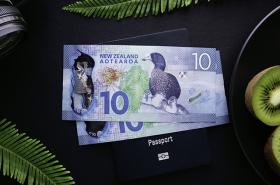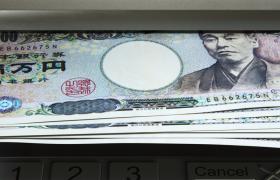Quick Contact

22nd February 2019
The Kiwi Dollar has had an interesting week. As it stands, one NZD will buy you:
0.6688 US dollars
0.5807 euros
0.5047 Great British pound
0.8737 Canadian dollars
0.9384 Aussie Dollars
The biggest influences (and worries) faced by the NZD this week were continued concerns over the US/China trade, as well as the softening performance of the Australian economy.
The Reserve Bank of New Zealand moved in a dovish direction, as projections of an interest rate hike were pushed back. Today the RBNZ hinted towards a rate cut as a result of an increase in bank capital requirements.
A rate cut is not good news for the Kiwi Dollar, or New Zealand travellers, as it will reduce that value of the NZD in the eyes of investors, thus putting downward pressure on its overall value against other currencies.
USA
This week the US Federal Reserve Bank’s minutes of their January 29-30 meeting were released. These minutes showed a slight reversal in the language and stance used regarding monetary policy compared to mid to late 2018.
According to the minutes, Federal Open Market Committee (FOMC) members favour ending the runoff of the central bank’s balance sheet in the second half of the year, much earlier than the market had expected. They also expressed some uncertainty over whether rates will rise again in 2019. What does this actually mean though? We’ve tried to simplify it as much as possible.
After the Global Financial Crisis in 2007, the Fed purchased a huge amount of long term assets (we’re talking trillions of dollars) to rapidly increase the value of their balance sheet in hope of putting downward pressure on long term interest rates.
Since then, assets have begun to mature and the Fed has continued to purchase new ones to maintain the size and composition of the balance sheet. This occurred for about three years until the US economy moved more in line with the Fed’s targets. From here, the Fed wanted to start reducing the huge balance sheet by very slowly letting older bonds mature and not reinvesting.
This notion started at the end of 2017/start of 2018. However, now the US economy is not all fine and dandy, and so the Fed has started slowing interest rate increases. As a result, there is talk of slowing, if not stopping, the current runoff from the balance sheet.
It does seem a little strange that we always hear how well the US economy is doing, yet the interest rate rises are seemingly off the table now. Interest rate rises are generally a symptom of an economy performing well.
Either way, this more dovish stance (definition below) has been supportive of the NZD. Fewer interest rate rises in the US means investors have had fewer reasons to move their capital away from New Zealand and into the US; after all, they’re seeking greater returns.
Australia
Thursday was a very big day for the Aussie dollar. On the positive side, the January jobs report was released and was much stronger than anticipated, with more than 39 thousand new jobs were created in January 2019. Following this release, the value of the AUD/USD exchange rate jumped from 0.7165 to 0.7207. This, in turn, boosted the value of the NZD.
Unfortunately, the Aussie Dollar’s spike didn’t last too long. Within an hour or so, Westpac’s well regarded Chief Economist, Bill Evans, released an update to the bank’s interest rate forecasts. Mr Evans has joined the growing list of economists that expect the next move in Australian interest rates to be down, forecasting interest rate cuts in both August and November. Almost out of sympathy, the value of the NZD also fell.
A drop in Australian interest rates isn’t great for Aussie travellers, however, Kiwi’s planning on heading across the ditch could potentially see upward pressure of the value of the NZD against the AUD.
The AUD and NZD was further beaten down by a report that the major Northern China port of Dalian had banned coal imports from Australia indefinitely. It’s a little unclear if this is actually true and, if it is, what this means going forward. Watch this space on that for now.
In terms of our other main themes, being US/China trade talks and Brexit, the trade talks are apparently continuing with no new developments to report.
Brexit
British Prime Minister Theresa May is facing another string of walkouts from the Conservative party as they protest the country’s current trajectory toward a no-deal Brexit.
Next Wednesday will see British MPs face (another) vote in which many are seeking a delay to Article 50, as well as a rule out of a ‘no deal’.
Prime Minister May has already survived two rounds of resignations and is currently working to secure changes to the current withdrawal deal with the EU in hopes of Parliament approving it.
Long story short, there has been a lot of political talk and power plays, however Britain is still no closer to any sort of Brexit agreement. This will continue to affect the value of the pound as markets digest the constant stream of political dribble that is coming out of the UK.
If you are travelling to the UK soon, it’s definitely worth keeping an eye on Brexit happenings (as painful as that might be) to take advantage of any dips in the value of the pound against the NZD.
Should you be travelling anywhere else, movements and commentary from the US, China and domestic sources will be your best bet for insight into the value of the NZD.
If this sounds a bit too tedious, or if you simply have better things to do than watch the happenings of the NZD (like maybe plan a holiday), simply sign up for rate alerts. We’ll do the hard work and send you an email if the rate hits your preferred level.
Definitions for those of us playing at home:
Dovish vs Hawkish
These are terms that refer to the general sentiment of a country’s central bank when talking about monetary policy.
The bank will take a hawkish stance when they want to prevent excessive inflation. This is often done by increasing interest rates. Increasing interest rates generally puts upward pressure on the value of that country’s currency, as investors can now get a greater return.
The bank will take a dovish stance when the economy is not growing and the government is seeking to guard against deflation. You guessed it; this could lead to decreasing interest rates which would put downward pressure on the value of the currency. Just keep in mind that this value is still relative to other countries, so a dovish stance is not always bad news for the value of the currency.
An easy way to remember: hawks fly higher than doves. So when markets talk about things being hawkish, it generally means things are going up. You normally see doves on the ground, so if there is talk of things being ‘dovish’, things may be going down.
This blog is provided for information only and does not take into consideration your objectives, financial situation or needs. You should consider whether the information and suggestions contained in any blog entry are appropriate for you, having regard to your own objectives, financial situation and needs. While we take reasonable care in providing the blog, we give no warranties or representations that it is complete or accurate, or is appropriate for you. We are not liable for any loss caused, whether due to negligence or otherwise, arising from use of, or reliance on, the information and/or suggestions contained in this blog.
All rates are quoted from the Travel Money NZ website, and are valid as of 22 February 2019
*Terms and conditions apply to Rate Guard. See http://www.travelmoney.co.nz/rate-guard for more information.











